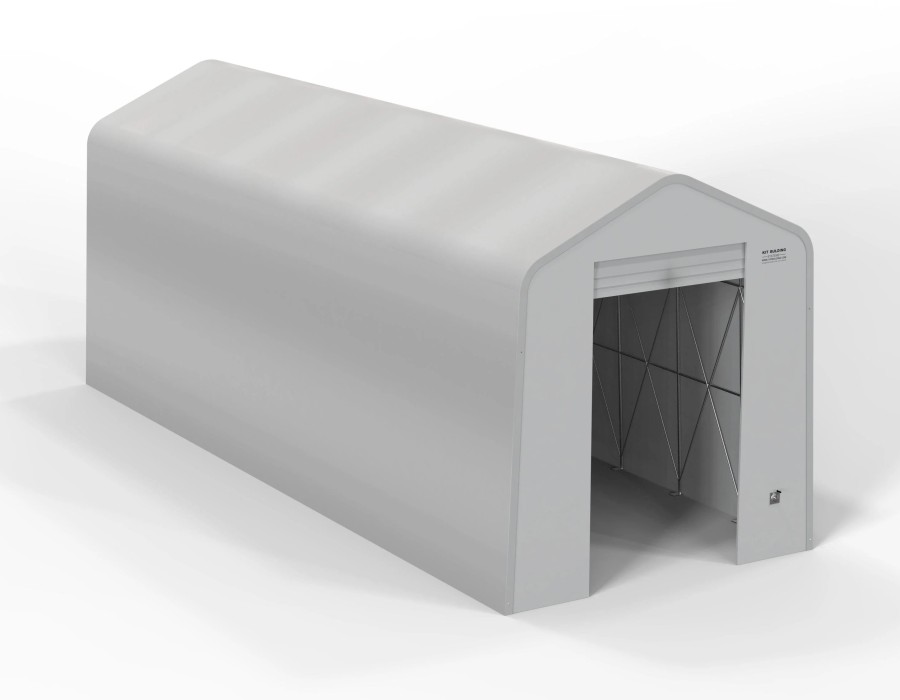Canvas buildings have emerged as a practical and innovative solution across various industries, offering a versatile alternative to traditional brick-and-mortar or steel structures. Known for their durability, cost-efficiency, and flexibility, canvas buildings are becoming increasingly popular in agriculture, construction, logistics, and even residential sectors. This article explores what canvas buildings are, their key advantages, common applications, and why they might be the right choice for your structural needs.
What Are Canvas Buildings?
Canvas buildings are structures made primarily from a heavy-duty fabric material—often polyethylene or PVC-coated polyester—stretched over a metal frame, typically made of galvanized steel or aluminum. Despite the term “canvas,” modern fabric structures use advanced synthetic materials that are waterproof, UV-resistant, and flame-retardant. These buildings are modular in design and can be customized in size and shape to meet specific requirements.
Advantages of Canvas Buildings
1. Cost-Effective Construction
One of the most appealing aspects of canvas buildings is their affordability. Compared to conventional buildings, they require fewer materials, less labor, and shorter installation time. This makes them an excellent choice for temporary or semi-permanent setups where cost-saving is essential.
2. Quick and Easy Installation
Unlike traditional buildings that can take weeks or months to construct, canvas buildings can be erected in a matter of days. Many models are available in pre-engineered kits, allowing for quick assembly without the need for specialized tools or heavy equipment.
3. Portability and Flexibility
Canvas buildings are ideal for businesses or operations that need flexibility. They can be easily disassembled, relocated, and reassembled in a new location without significant costs. This makes them a great option for construction sites, temporary warehouses, and remote agricultural setups.
4. Durability and Weather Resistance
Despite being fabric-based, modern canvas buildings are engineered to withstand harsh weather conditions. The steel frames provide structural integrity, while the coated fabric is designed to resist wind, rain, snow, and UV rays. Many manufacturers also offer options that meet regional building codes for snow load and wind rating.
5. Natural Lighting and Energy Efficiency
Canvas buildings often feature translucent fabric covers that allow natural light to penetrate, reducing the need for artificial lighting during the day. This contributes to energy savings and creates a brighter, more comfortable interior environment.
6. Environmentally Friendly
Since they require fewer materials and produce less construction waste, canvas buildings are considered environmentally friendly. Their reusability and lower energy consumption further enhance their sustainability profile.
Common Applications of Canvas Buildings
Thanks to their versatility, canvas buildings are used across a wide range of sectors:
- Agriculture: Farmers use them for hay storage, livestock shelters, machinery sheds, and greenhouses.
- Construction: Contractors rely on them for equipment storage, site offices, and temporary shelters.
- Warehousing and Logistics: Canvas buildings serve as cost-effective warehouses or trans-shipment hubs for goods.
- Events and Exhibitions: From trade shows to outdoor weddings, canvas structures provide elegant, weatherproof solutions.
- Emergency and Relief: In disaster-affected areas, they are deployed as temporary shelters, medical tents, or command centers.
- Recreational Use: Used as sports facilities, riding arenas, or camp shelters due to their large open interior spaces.
Customization Options
Modern canvas buildings offer extensive customization options including:
- Size and layout
- Door and window placements
- Flooring and insulation
- Ventilation systems
- Branding and color choices
These options allow businesses to tailor the structure to their specific operational needs and aesthetic preferences.
Considerations Before Purchasing
Before investing in a canvas building, consider the following:
- Purpose and Duration: Determine whether it’s for temporary, semi-permanent, or permanent use.
- Climate and Weather: Choose materials and designs suited for local weather conditions.
- Building Codes and Permits: Ensure compliance with regional zoning laws and safety regulations.
- Foundation Requirements: Depending on size and use, some canvas buildings may require a concrete or gravel foundation.
Final Thoughts
Canvas buildings offer a smart and sustainable solution for a variety of applications. With their low cost, rapid deployment, and environmental benefits, they present a compelling alternative to conventional structures. Whether you're looking to expand storage, host an event, or establish a flexible workspace, a canvas building might be the perfect fit.
As industries continue to seek adaptable and eco-friendly solutions, the popularity of canvas buildings is only expected to grow. Investing in one today could offer the operational flexibility and cost savings needed for tomorrow.





Comments